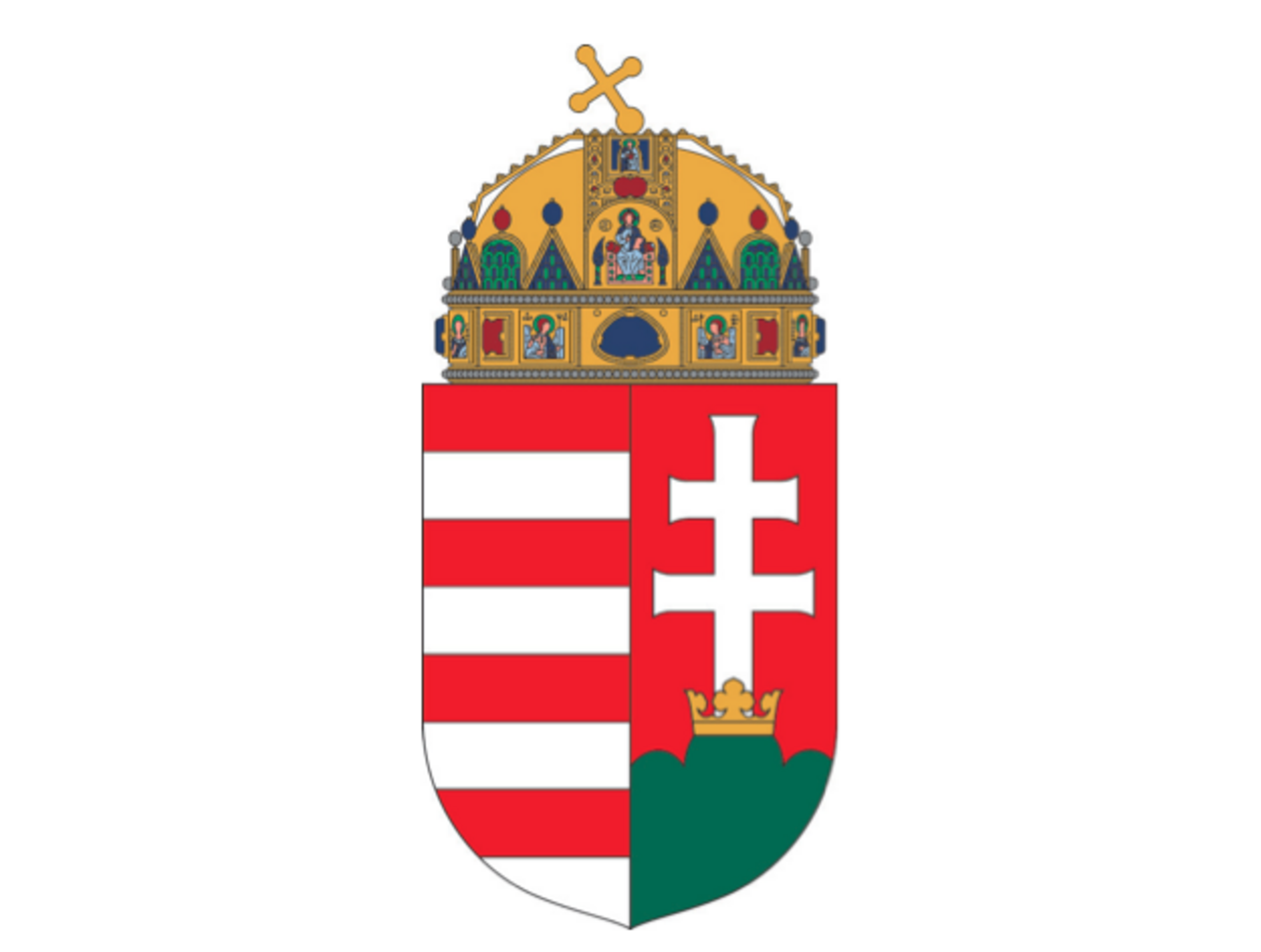Hungary's flagThe red, white and green tricolour was adopted as the basis for the Hungarian flag around the time of Hungary's failed revolution in 1848 against the Habsburg Empire - although the colours come from the Hungarian Coat of Arms, which dates back centuries earlier. The flag design is made up of three thick horizontal stripes, with the colours said to indicate strength (red), faithfulness (white) and hope (green). Some influence in the design is also said to come from the French tricolour, as a tribute to the ideas behind the French revolution. There are also suggestions that the red represents the blood shed in past battles, white represents freedom or the country's rivers, while green represents the lush, fertile land of Hungary.
The national flag has undergone many changes. While the red, white and green stripes have been the basis for successive Hungarian flags since 1848, variations of the Hungarian Coat of Arms have at times been placed in the middle. The current-day plain tricolour - without any additional symbols on it - was instated on 12 October 1957 and has remained unchanged since that time.

The flags below show some of the flag designs pre-1957.
The symbols placed on the flag are all variations of the Hungarian Coat of Arms that were created or adopted depending on the ruling party or the politics of the time. Check out the National and Historical Symbols of Hungary archive to see a gallery of even earlier flags.



The flag you can see below was the flag briefly used during and after the failed 1956 Hungarian revolution against Soviet occupation. It shows a hole cut out by revolutionaries where a communist symbol had been on the flag. This flag has become an enduring symbol of the 1956 revolution.

Hungary's Coat of ArmsThe current Hungarian Coat of Arms (as seen in the image below) has been in place in this form since the end of communism in Hungary in 1990. While this version was reinstated in 1990, it's been used - or has been the basis of other designs - since the late Middle Ages.
The shield has two parts, the left side is made up of red and white "Árpád stripes," which originate back to the House of Árpád dynasty in the 9th and 10th centuries. The four white stripes represent the four rivers:
Danube, Tisza, Dráva, and Száva. The red and white are divided seven times and this is said to represent the seven Magyar tribes that joined to form the Principality of Hungary in the 9th century. On the right side of the shield is a double cross sitting in a crown, placed on three hills, which represent the Tátra, Mátra and Fátra mountain ranges located in the Carpathian Basin.
The crown on top symbolises St. Stephen's crown with the crown's bent cross on top. St. Stephen was the first King, and founder, of Hungary.

This official symbol of Hungary has been different at different times in the past, sometimes with angels on either side of the shield, or sometimes taking on the political symbols of the ruling party of the time. For example, during communist times the crown and cross were omitted from the Hungarian Coat of Arms and the red star was added to the revised design.
The current coat of arms (above) is what's referred to as the "small" version; and there have also been what's called "medium" and "large" versions. In the image below you can see the "medium" coat of arms with the "small" crest in the middle. It's embellished to include the coat of arms of various territories that had been part of the Lands of the Crown of St. Stephen, as well as two angels.

For short periods the so-called "Kossuth Coat of Arms" (below) was used. It's named after Lajos Kossuth who was a Hungarian politician during the 1848-49 revolution.
It's a different shape and is missing the crown on top; this was intended to symbolise Hungary's independence from a monarchy. While it was first used during the 1848-49 revolution against the Habsburgs, this coat of arms came to symbolise Hungary's independence from other foreign powers too, and this crest was widely used during the 1956 revolution against the Soviets as well.

Hungary's national anthem
The words of Hungary's national anthem were written by poet Kölcsey Ferenc in 1823. A competition was held for a composer to set music to the poem and this was won by Ferenc Erkel. Erkel's composition made its debut in 1844.
The anthem is actually eight versus long, but the most commonly sung first verse is this one (you can
listen to it here):
Isten, áldd meg a magyartJó kedvvel, bőséggel,Nyújts feléje védő kart,Ha küzd ellenséggel;Bal sors akit régen tép, Hozz rá víg esztendőt,Megbűnhődte már e népA múltat s jövendőt!
This is the poetic translation of the first verse in English, but you can read the full eight versus here.
O, my God, the Magyar blessWith Thy plenty and good cheer!With Thine aid his just cause press,Where his foes to fight appear.Fate, who for so long didn't frown,Bring him happy times and ways;Atoning sorrow hath weighed downSins of past and future days.
Here is the literal translation of the first verse in English:
O God, bless the nation of HungaryWith your grace and bountyExtend over it your guarding armDuring strife with its enemiesLong torn by ill fateBring upon it a time of reliefThis nation has suffered for all sinsOf the past and of the future!
It's interesting to note that the "Himnusz" makes a plea to to God, and that this reference meant that during communist times (when religion was discouraged to varying degrees) the anthem was sometimes played without the words. During the communist years there were even attempts to replace the anthem, but these were unsuccessful.
(Cover photo:
hammmem - Instagram)




